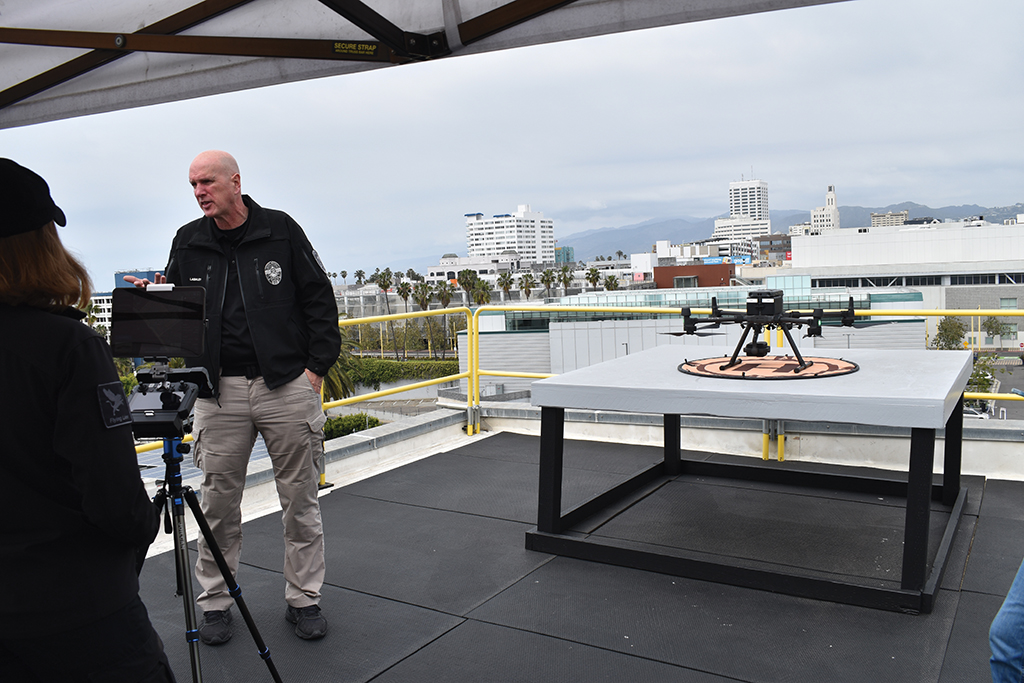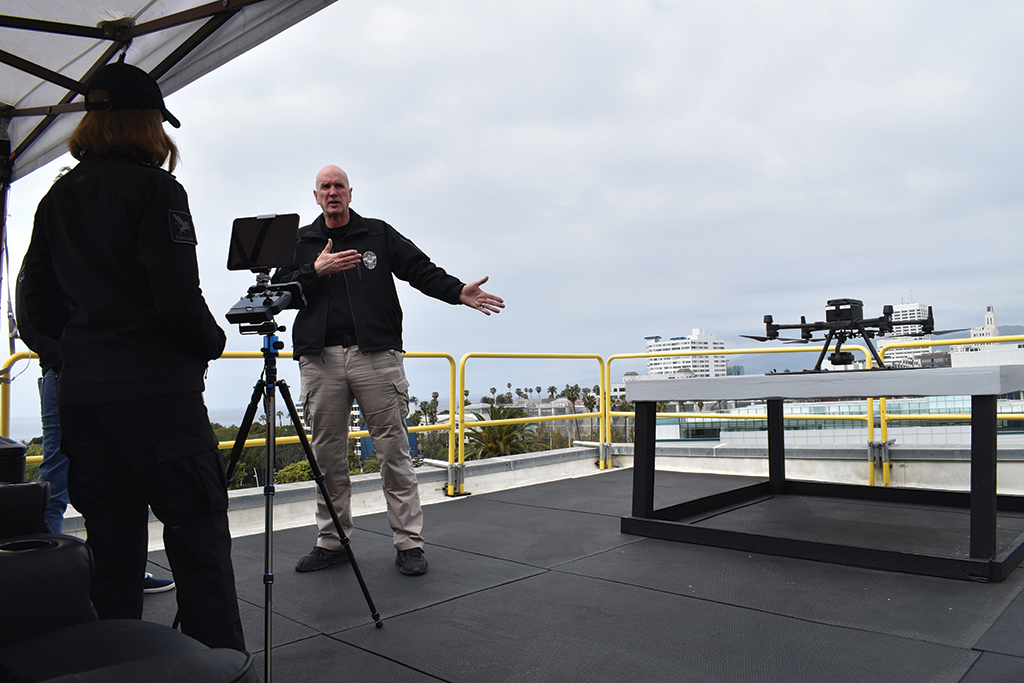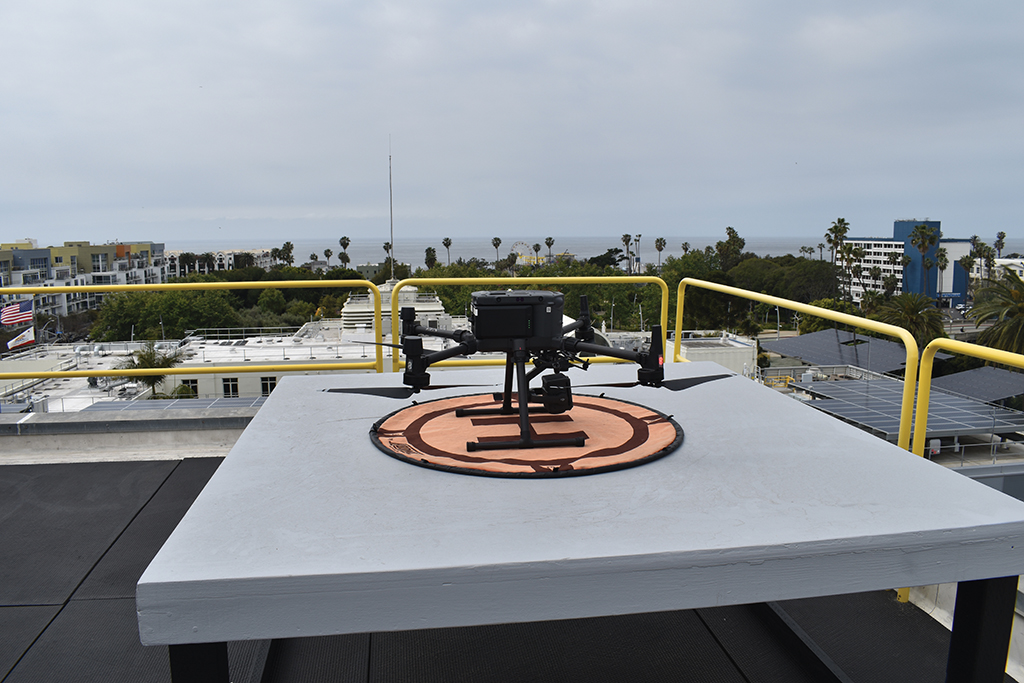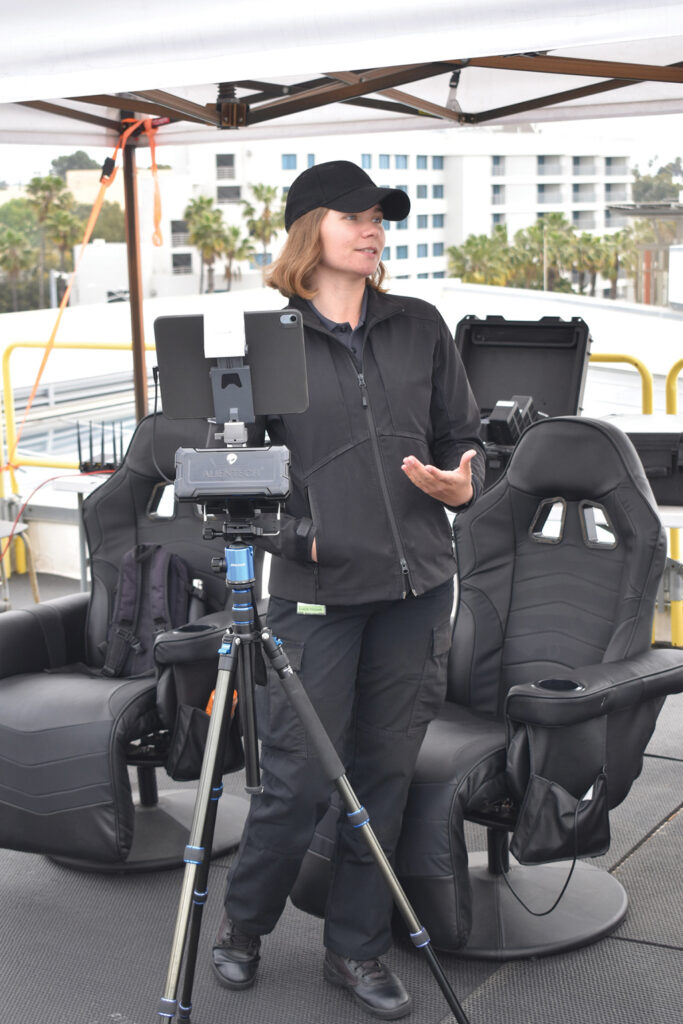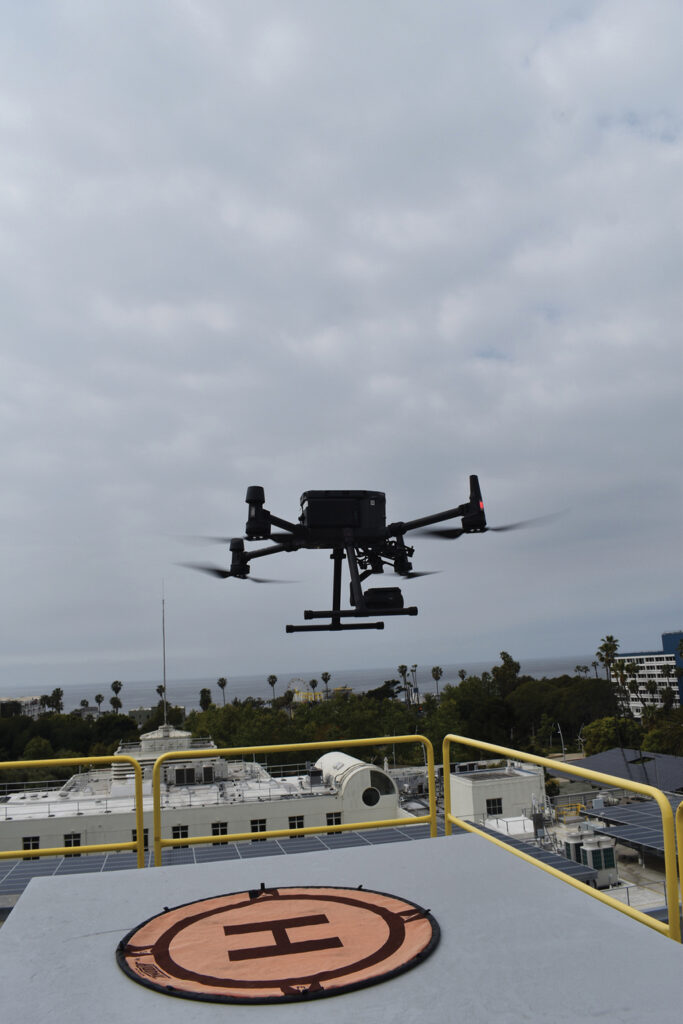It’s a bird. It’s a plane. It’s a $12,000 police drone. And, while it’s not faster than a speeding bullet, it is capable of making it from one end of town to another in a speedy 2.5 minutes.
The Santa Monica Police Department (SMPD) drone is on call 40 hours a week from its perch above the Santa Monica Public Safety Facility, ready to fly off at a moment’s notice to answer service calls. The drone, also known as a UAS, or unmanned aircraft system, is steered by a sworn officer and overseen at all times by a non-sworn licensed pilot who stands on the facility’s roof with eyes on the drone at all times.
The SMPD has had a drone program in place for about six years, but its use has evolved from being an extra pair of eyes in the sky into a key tool for responding to emergencies.
Any 911 call in the city between the hours of 10 a.m. and 8 p.m. from Wednesday through Saturday could elicit a drone response — often overhead before vehicles have time to arrive on scene — through the new “drone as first responder” or DFR program.
“Basically, the concept behind that is, you have [something] similar to a helicopter, with traditional air support,” Cpt. Saul Rodriguez said during a drone demonstration at the facility earlier this spring. “That person operates the drone, actually, from the office here on the fourth floor. And they have the ability to monitor radio calls. They can hop on calls and whenever they feel like, ‘Hey, I think I can use this with a UAS,’ he’s able to basically navigate the drone to where it needs to go. He can do a pin drop with the software and it’ll take him straight to that [point].”
The DFR program was launched in November 2021 and is based on a similar program in Chula Vista, south of San Diego. The Chula Vista DFR system came online in 2018.
Speaking to the Daily Press during the demonstration, officers acknowledged longstanding community concerns regarding privacy, but said a combination of FAA (Federal Aviation Administration) and department policies keep them from using drones for surveillance.
“We do not use this for random patrolling,” SMPD Officer Peter Lashley, the drone operator, said. “I don’t just go up and, you know, look for something.”
But that’s not to say there aren’t some instances where the drone is sent out on rounds, similar to patrols a police vehicle may make.
“Say we had a specific [parking] structure where we’re constantly having vehicle burglaries — there may be a periodic check,” Lashley described. “But that’s a documented call where I’m specifically going to that because of crime trends, calls for service and whatnot.”
Lashley also pointed out that having a non-sworn pilot functions much like a built-in civilian oversight component to the drone program, since the pilot’s function is exclusively safety and FAA compliance.
The federal authority’s complex rules create firm boundaries for the program, limiting the height, distance and time of day the drone may fly. Because the pilot must have eyes on the drone at all times, it can only fly around the downtown area — anywhere within line of sight from the roof of the Public Safety Facility at 4th Street and Olympic Boulevard. Nighttime flights require an additional set of eyes and the program has limited nighttime operations. That also helps cut back on costs, since the drone team works normal 40-hour work weeks.
There is also one other major limiting factor for the drone’s capabilities: its 30-minute battery life.
On the roof, the pilot, Lucy, is in charge of not only monitoring the drone, but ensuring its batteries stay fully charged at all times. In addition to comfortable chairs, snacks and an easy-up tent with a plastic windbreak, there are also a dozen pairs of batteries fully charged and waiting to be swapped in to keep the drone topped up. During longer calls or events — for example, the last time the LA Marathon ended in Santa Monica — the drone flies back to the facility every 25 minutes to have its batteries refreshed.
Although the drone program only functions for eight-hour shifts, there are enough batteries to keep a drone in the air for 24 hours should the need arise.
Above all other capabilities, Lashley said the program’s greatest use is as a de-escalation tool. With a drone, SMPD can arrive at a call and assess danger while officers are still en route in patrol vehicles. That way, they’ll know the precise location of any suspects and ascertain if there are any weapons, so officers know what situation they’re walking into.
By way of example, Lashley showed a video recording of a DFR call, where someone called 911 to report teenagers brandishing a gun. When the drone arrived, it spotted a group of young people sitting below the awning of a building. After a few seconds, one pulls a handgun out of a sweatshirt pocket. Eventually, two black handguns are visible. But about 30 seconds into the footage, while police vehicles are still making their way toward the location, one of the young people appears to manipulate the weapon, revealing a CO2 cartridge. It immediately begins to appear that the guns are not real.
“I’ve identified who have the guns [and] that I’ve seen visual evidence indicative of something that’s not conforming to a standard firearm,” Lashley said, describing what he did while on the call that day. “So, could they have a real gun? In addition to those two? Yes. Have they shown a proclivity to point these guns at people? Yeah. It’s still a very serious threat level. But we’ve also introduced the — I’ve seen that at least two of these, potentially, are CO2 BB guns, something to that effect.”
Lashley said: “The primary benefit of this is de-escalation for the officers,” because a frantic 911 call from a witness could include misinformation that could put officers as well as suspects in danger.
“It allows them to de-escalate, to power down and to approach the situation from hearing a veteran officer that they all know giving them the information rather than it coming from just a random source,” Lashley described.
The department is enthusiastic about the program, with some suggestions of a potential expansion to cover the Wilshire corridor toward the eastern end of town. There is also a desire to see staffing increase to move the program from four to seven days a week.
“Right now, we’re flying Wednesday through Saturday,” Rodriguez said. “The requests are coming Sunday, Monday, Tuesday when we’re not flying, because they see the value — they’re seeing how much it’s ingrained into the fabric of what we’re doing out here. It’s amazing.”
emily@smdp.com


